A trip back in time
WANTAGE. Visitors celebrate Christmas in July at DAR Van Bunschooten Museum.
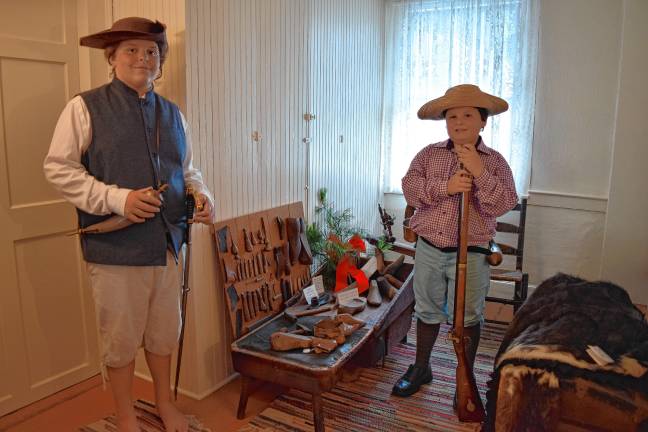
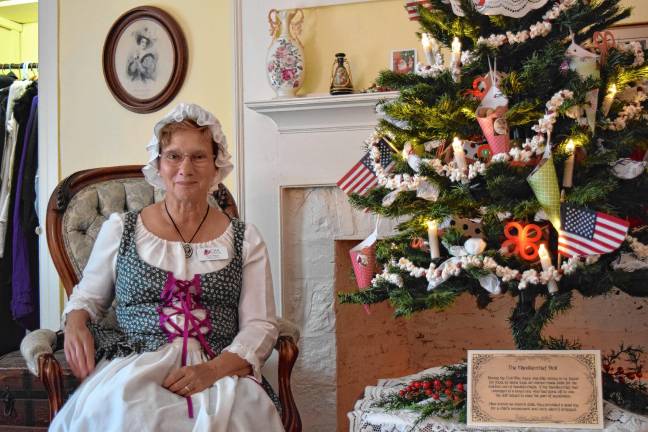
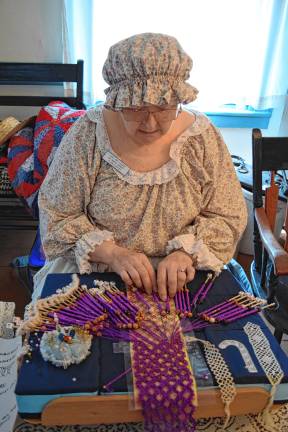
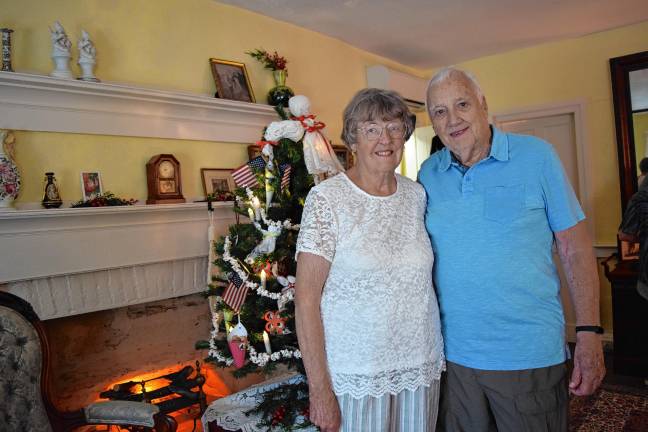
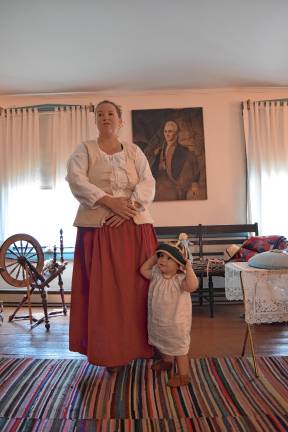
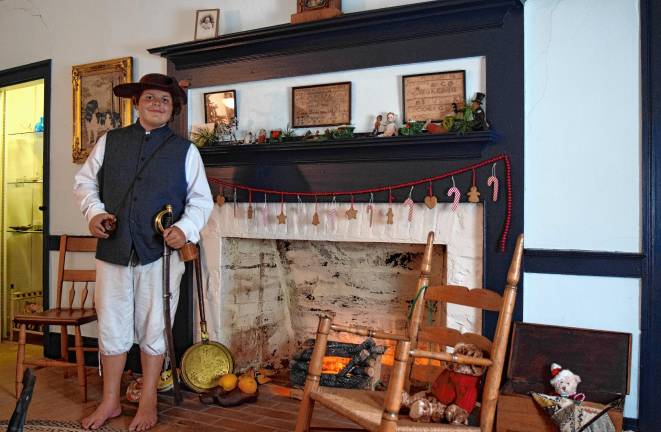
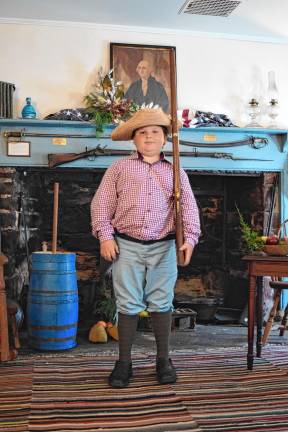
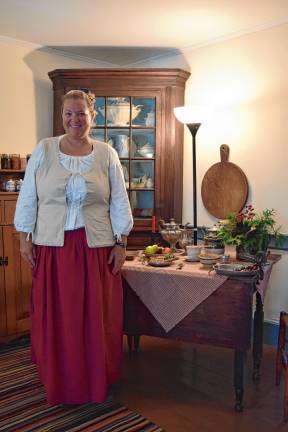
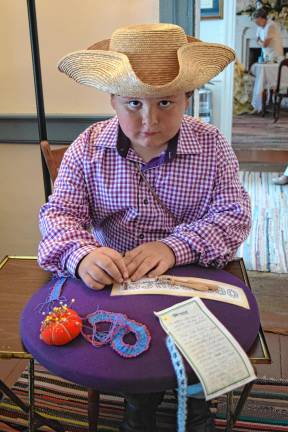
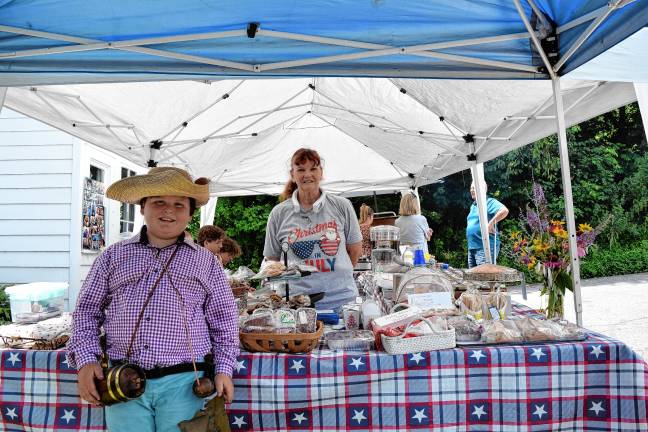
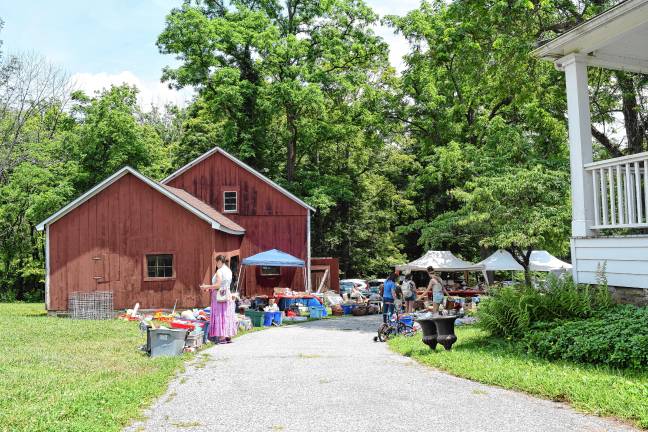
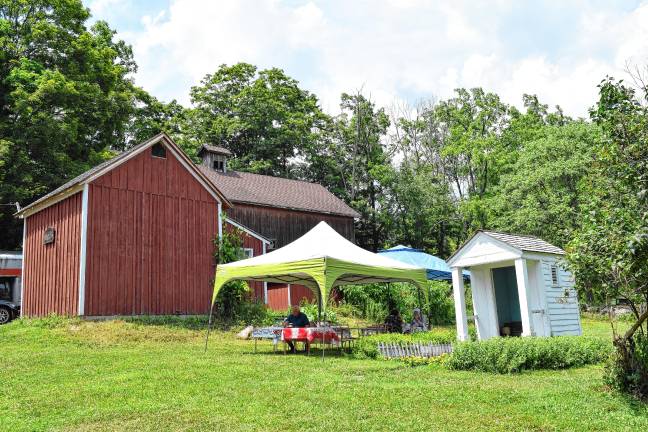
Six months early, Christmas was celebrated with a festive summer event July 11-13 at the DAR Van Bunschooten Museum in Wantage.
The museum’s main house, built in 1787 for the Rev. Elias Van Bunschooten, was decorated for the holiday by the Chinkchewunska Chapter of the National Society Daughters of the American Revolution (DAR).
Visitors took free guided tours featuring historical re-enactments and demonstrations that brought the past to life.
Café Elias offered lunch and homemade treats, and guests browsed the Attic Treasures sale and placed bids in a silent auction.
Ashley Ziccardi, a Wantage native and DAR member, serves as the museum curator. Her sons August, 11, and Heath, 10, helped lead the tours, while her daughter, Reagan, 1, demonstrated the pudding cap used until the late 18th century to protect children’s heads when they were learning to walk.
“The museum plays an important role in connecting the community with its history,” Ashley Ziccardi said. “Many original items remain in the house, including portraits, clothing and even a toothbrush holder from 1850.”
The museum shares stories of the people who lived there through their preserved belongings and written memoirs of everyday life.
“We’re still discovering more,” she added.
Symbols of affluence
During a tour of the parlor, Ziccardi explained that the oil wealth of the Cooper family allowed for subtle status displays, such as presenting celery in expensive glass vases, symbols of affluence because of the cost of celery and how difficult it was to grow.
During the years, descendants of the Van Bunschooten and Cooper families have continued to make donations to the museum.
Britta Cooper, the great-grandniece-in-law of Van Bunschooten, was the last descendant to live in the house.
The house initially was rented, then later sold to the Dumont family and eventually purchased by the Ramsey family.
It was donated in 1968 to the DAR, and although Chinkchewunska Chapter accepted the offer that year, the donation was not finalized until 1971, after Clifford Ramsey’s death.
Ramsey and his wife donated the house, its outbuildings and six acres of land to the Chinkchewunska Chapter. In the Lenape language, Chinkchewunska means “town on the side of a hill,” referring to the settlement that became Newton, where the chapter organized in 1903.
Members began restoring, refurbishing and redecorating the historic property, now known as the DAR Van Bunschooten Museum. In recognition of its historical significance, the house and outbuildings were added to the National Register of Historic Places in 1974.
August Ziccardi said, “Back in the early 1970s, when the house was officially donated, the promise was to keep history alive. I like doing tours.”
Filled with antiques
The museum has 10 rooms filled with a remarkable array of period antiques originally used in the home and donated by members of the Van Bunschooten family.
The collection, dating from 1787 to 1860, includes historic clothing, hand-stitched quilts and woven coverlets, dolls, furniture, oil paintings, cookware, fine china, wagons and farm tools.
In addition, the library houses about 900 volumes and is regularly used for local history and genealogical research.
During a tour of the upstairs bedroom, DAR member Wendy Wyman explained that although the Rev. Elias Van Bunschooten lived modestly downstairs, the upstairs guest bedrooms were built with double fireplace mantels influenced by his time studying in England.
Visitors Janice and Richard Crissey of Fredon said, “We love the history of the Revolutionary War era so we came to support the museum. Except for a few years, we have always lived in Sussex County and enjoy its history.”
DAR member Clara Eastby of Branchville demonstrated the process of making a scarf using bobbin lace techniques.
During the ice house tour, Heath Ziccardi explained that it has a dirt floor so any melting ice is absorbed into the ground. The privy had plaster walls like the main house, which was highly unusual.